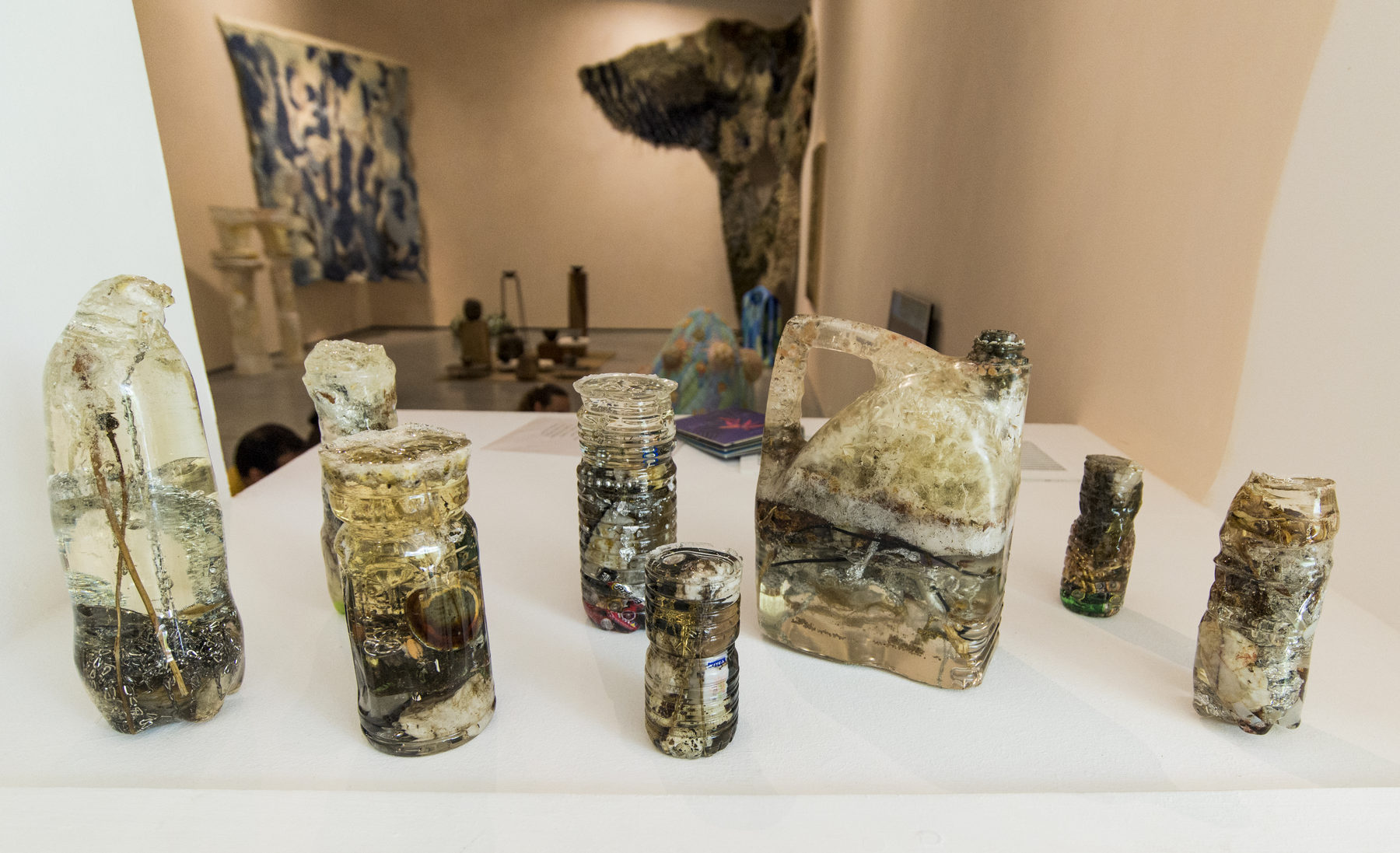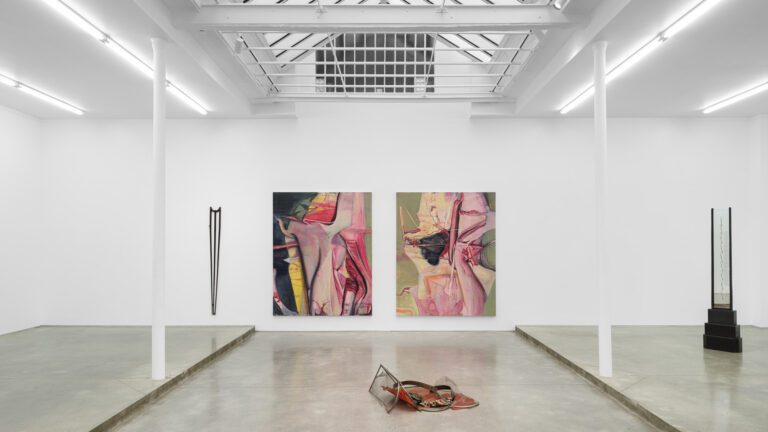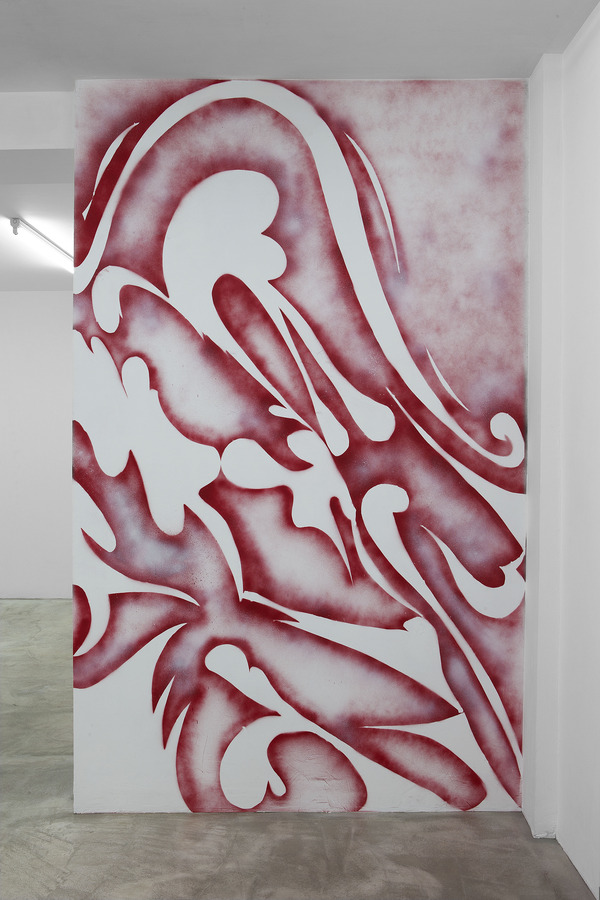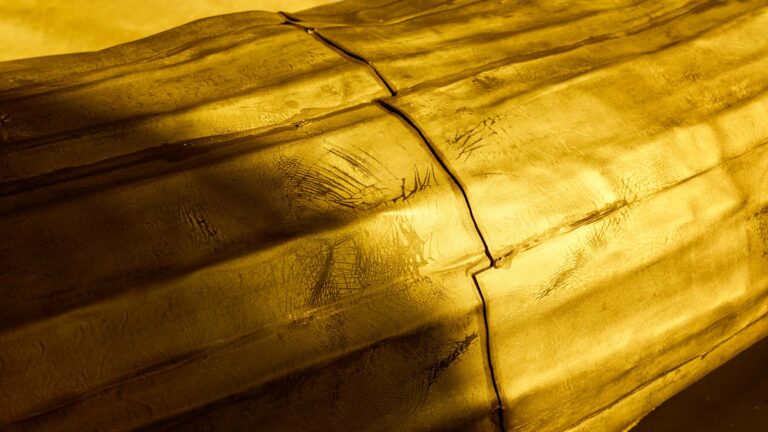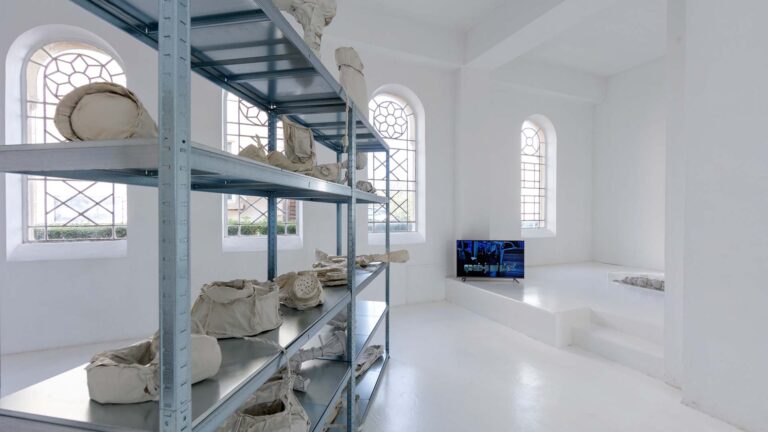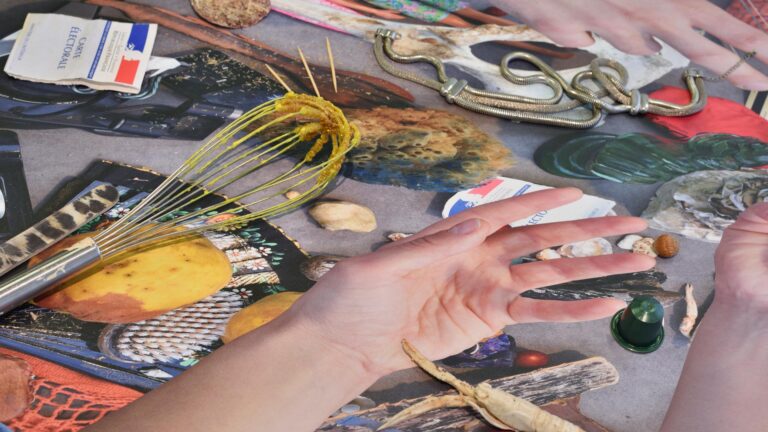Artists: Caroline Achaintre, Elise Carron, Eric Croes, Mimosa Echard, Aurélie Ferruel & Florentine Guedon, Yann Gerstberger, Bella Hunt & DDC, Matteo Nasini, Samara Scott, Markus Selg, Santo Tolone, Natsuko Uchino, We Are The Painters
Exhibition title: Pre-capital
Curated by: Charlotte Cosson, Emmanuelle Luciani, Nicolas Bourriaud
Venue: La Panacée, Montpellier, France
Date: May 20 – August 27, 2017
Photography: all images copyright and courtesy of the artists and La Panacée, Montpellier
Note: Exhibition booklet can be found here
The art world is all about “post” : postmodern, post-Internet, post-human… During the race towards progress, our eyes stare at the after, at the new, at what perforce seems better. Following Hegel, who gave meaning and purpose to History, and in line with a technological development governed Occident, the theorists and artists of postmodernism[1] never stopped echoing their present while ignoring a passed reduced to a toolbox of decontextualised shapes.
Always thinking “the after” is like getting in line with a revolutionary past made of artistic movements always replaced through radical changes. This very European – and typically French – way of looking at History makes it easy to forget that systematically, major and minor trends coexist within an era and very often the next sees the repressed resurface in lieu of the norm. A good example is the market economy : timidly born in the XVIth century, it only replaces the “material life” during the XVIIIth and since then has become little by little the mainstream way of life.[2]
Caroline Achaintre, Elise Carron, Eric Croes, Aurélie Ferruel & Florentine Guedon, Yann Gerstberger, Bella Hunt & DDC, Matteo Nasini, Santo Tolone, Natsuko Uchino and We Are The Painters work with wool, clay, lime, natural pigments, canvas, bronze, leather… They transform the raw material themselves, far from the manufactured objects feeding our daily lives and western museums since Marcel Duchamp’s urinoir. They thus get in line with traditional craftsmanships often lost in megacities. Their art comes from rural and ancestral knowledge; it couldn’t come from a capital city. It portrays itself as a non-capitalist art.
The artworks exhibited here are at human scale, far from the gigantism characterizing the consumer society. They develop in an organic way in contrast to sharp angles and to the cold synthetic materials featured by modernity. As in Jacques Couëlle’s architecture, where all is roundness and warmth, those works think a habitat respectful of a humankind reconnected to its natural dimension. They propose a living together that would ease the differences between artists and artisans, rich and poor, “nature” and “culture”. It is therefore no surprise that we find precedents to this approach among the theories regarding humility and the vernacular traditions, developed by Yanagi Sohetsu when opposing the massive industrialisation of Japan, or in the Italian practices, grown from a nation that remains highly agricultural since the economic-industrial boom of the Glorious Thirties which didn’t shine as much there.
The artists exhibited here develop a philosophy of the link that could tie them together in a community. This alternate living together concurs with the one of the “cultural creatives”[3] who often chose a way of life respectful of the environment. However, the way “pre-capital” artists work is not ecological by ideal, but by necessity. They will still be able to work after an electric and/or stock market crash. Those artists answer, sometimes unconsciously, to the necessity of “paying the entropic bill”[4] of modernity’s massive use of Earth’s energy resources.
Those artists in quest of ancestral craftsmanship are not naive enough to think it would be possible to come back to a “natural state”, perfect and prior to the coming of mankind [5]. Mimosa Echard and Samara Scott put into their work the garbage gathered by consumption. They therefore emphasise the obligation for the upcoming society to take into account several centuries of accumulation. The “pre-capital” artworks thus tap into the source of humanity to glimpse fearlessly into a future assuming our present.
-Charlotte Cosson & Emmanuelle Luciani
[1] Paradoxically given the ontological immobility in which they are
[2] Braudel, Fernand, Capitalism and Material Life, 1979
[3] Ray, Paul H., Anderson, Sherry Ruth, The Cultural Creatives: How 50 Million People Are Changing the World, New York, Harmony Books, 2000
[4] Rifkin, Jeremy, The Zero Marginal Cost Society: The Internet of Things, the Collaborative of Commons, & and the Eclipse of Capitalism, St. Martin’s Griffin 2015
[5] Rousseau, Jean-Jacques, Of the Social Contract, Principles of Political Right, 1762.














































